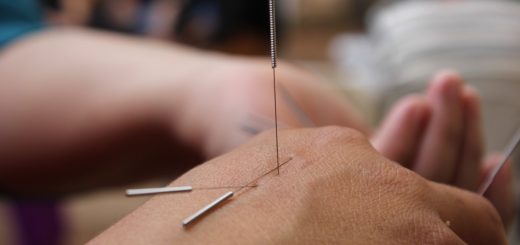Everything you need to know about transitioning.
People are more open about exploring their gender identity and dealing with the associated issues these days. However, there is still a taboo and stigma associated with being trans and transitioning. Come along with us and discover what transitioning means and what it entails. Transitioning is different for every trans person and this journey and how much you transition depends on you, but it doesn’t take anything away from your gender identity and who you are. Let’s walk a mile in a trans or non-binary’s person’s shoes and see what this means.
What is transitioning?
Transitioning can mean different things for different trans people, but essentially, it is when you take steps to start living as your preferred gender identity rather than the one you were born with. Transition can take three forms; medical, social and legal.

How does one transition?
1. Medical transitioning
For women transitioning to men, it may include the following:
-
- Top surgery or male chest reconstruction, where the breast tissue and breast are removed.
-
- Metoidioplasty: a surgery that causes the clitoris to work more like a penis and, alongside hormone treatment, allows it to grow larger.
-
- Hormone therapy, whereby one gains masculine features like a deeper voice and facial hair, stops one from getting their period, grows more muscle, and there is a redistribution of body fats away from the hips and breast.
-
- phalloplasty- construction of the male phallus using skin from other parts of the body
-
- Hysterectomy or the removal of the female reproductive organs (ovaries and uterus)
For men transitioning to women, it may include:
-
- Tracheal shaving or the reduction of the Adam’s apple
-
- Penile inversion vaginoplasty- where a vagina is created by inverting the penile skin.
-
- Breast augmentation through plastic surgery
-
- Hormone therapy creates more feminine features like the development of breast tissues, less body hair and a redistribution of body fats towards the hips and breasts.
-
- Orchiectomy- the removal of the testicles
-
- Laser hair removal to remove hair from your face and any other part of your body
2. Legal transitioning
While this is not required and not a lot of trans or non-binary people change their name legally, some of them do. Some people hate being referred to as their dead name (the birth name given to someone prior to transitioning) and legally change it to their preferred name (the name they choose for themselves that fit their new gender identity). However, the ability to legal transition depends on where you live, as some places explicitly restrict this. Some states require someone to transition medically before they are allowed to change their name legally. Some US states and territories like Tennessee, Ohio, Puerto Rico, Idaho make it extremely difficult or outright impossible for one to legally transition. However, some libraries, workplaces and other public and private organizations are doing their best to call people by their preferred name instead of addressing them by their dead name.
3. Social transitioning
This is one of the less costly but most emotionally straining types of transition. This involves coming out to your friends and family and anyone you wish to. However, you may never know one’s reaction to your coming out, so be prepared for the worst, you may even lose some friends and family members over this, but it will show you who your real allies are. Always remember that coming out is your choice; you don’t owe it to anybody. Also, remember to only come out in a safe environment; if you fear that you’ll be disowned and unhoused after coming out, don’t do it, rather wait till you are financially independent to come out to your parents. This is your journey; take it as fast or as slow as you want, don’t let anyone dictate how you should live your life.
Transitioning may also involve changing your preferred pronoun. Some trans people prefer the pronoun that is associated with the gender they are transitioning into, that is, he/his or she/her. While most non-binary individuals prefer they/them pronouns. If someone tells you their preferred pronoun, please use that to refer to them as it’s not that hard to do. It may also incur changing one’s name and the way they dress that fits your gender identity.

Do you have to transition to be a trans or non-binary person?
The short answer is no. The long answer is also no; transitioning in any way, shape or form depends on the trans person themselves. It doesn’t matter as long as you are confident with who you are and how you look. Some trans people transition socially but not medically, while others might want to transition fully. Some people only go through a couple of phases of medical transition and stop at certain procedures. This depends on several factors, but the most recurring one is money, it takes a lot of money to transition safely and this is not usually covered by some if not most insurances in the USA.
No matter if someone has transitioned fully, partly, or not, their identity is still valid and real. Someone’s gender should always be respected irrespective of their transitioning journey. Remember, it takes money to transition, but it costs nothing to respect someone.
Sound off in the comments section below and tell us if you learnt anything new today, and tell us your preferred pronoun too.




It’s interesting to know that Adam’s apple reduction is also one of the things that can be done during MtF transition. One of my friends is interested in looking for telehealth transgender counseling sessions because she is still a bit undecided if she should go for it. Talking to an expert will also help her in finding the right kind of medication if she ever wanted to try taking hormones.